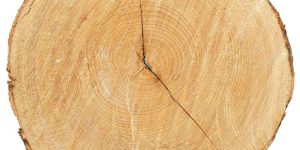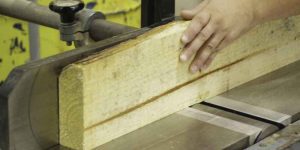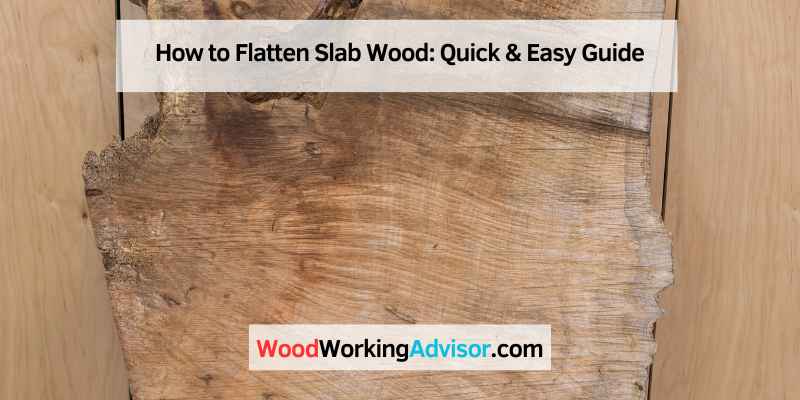To flatten slab wood, use a planer or a sander for an even surface. Ensure proper safety gear.
When working with slab wood, achieving a flat surface is essential for various projects. Whether you are creating a tabletop, countertop, or shelves, the process of flattening slab wood is crucial for a professional outcome. By following the right steps and using the appropriate tools, you can transform rough and uneven wood slabs into smooth and polished pieces ready for your woodworking project.
In this guide, we will explore the methods and techniques to effectively flatten slab wood, ensuring a high-quality finish for your woodworking endeavors.
Introduction To Slab Wood
Slab wood is a type of lumber that is cut directly from the log, resulting in a wide, flat piece with the natural edge intact. This raw and rustic material is sought after for its unique and organic look, making it a popular choice for creating furniture, countertops, and other decorative items. Flattening slab wood is a crucial step in the woodworking process, ensuring a smooth and level surface for a polished final product.
Characteristics Of Slab Wood
Slab wood is characterized by its raw and unprocessed appearance, featuring live edges that showcase the natural contours of the tree. It often displays distinct grain patterns, knots, and other imperfections that add to its charm and individuality. The thickness of slab wood can vary, ranging from a few inches to several feet, providing versatility for different woodworking projects.
Benefits Of Flattening Slab Wood
- Enhances Stability: Flattening slab wood ensures a stable and even surface, reducing the risk of warping or unevenness in the final piece.
- Reveals Natural Beauty: The flattening process unveils the intricate grain patterns and unique features of the wood, enhancing its visual appeal.
- Facilitates Joinery: A flat surface allows for seamless joining of multiple slabs, enabling the creation of larger pieces with a cohesive appearance.
- Smooth Finish: Flattening eliminates rough spots and uneven areas, providing a smooth canvas for sanding and finishing treatments.
Essential Tools For The Job
When it comes to flattening slab wood, having the right tools is crucial. Whether you’re a seasoned woodworker or just starting out, having the essential tools will make the process easier and more efficient. In this section, we will explore the key tools you’ll need to flatten slab wood, including choosing the right planer, understanding router sled basics, and using hand tools.
Choosing The Right Planer
A planer is a must-have tool for flattening slab wood. It helps to remove excess material and level the surface of the wood. When selecting a planer, there are a few factors to consider:
- Power: Look for a planer with sufficient power to handle the size and hardness of the wood you’ll be working with.
- Cutting Depth: Ensure the planer has an adjustable cutting depth to accommodate different thicknesses of wood.
- Width Capacity: Consider the maximum width capacity of the planer to ensure it can handle the size of your slabs.
- Portability: If you plan on moving your planer frequently, opt for a portable model that is easy to transport.
By choosing the right planer, you’ll be able to achieve smooth and even surfaces on your slab wood.

Router Sled Basics
A router sled is another essential tool for flattening slab wood. It consists of a router attached to a sled, which moves along the surface of the wood to remove material evenly. Here are some basics to keep in mind when using a router sled:
- Stability: Ensure the sled is stable and can move smoothly across the wood without any wobbling.
- Router Bit Selection: Choose a router bit suitable for removing material from the wood without causing tear-out.
- Multiple Passes: It’s often necessary to make multiple passes with the router sled to achieve the desired level of flatness.
- Supports and Braces: Use supports and braces to prevent the wood from sagging or bowing during the flattening process.
Mastering the basics of using a router sled will help you effectively flatten your slab wood.
Using Hand Tools
While power tools like planers and router sleds are commonly used for flattening slab wood, there are also hand tools that can be helpful in the process. Here are a few hand tools you may consider:
| Hand Tools | Description |
|---|---|
| Hand Planes | Hand planes can be used for fine-tuning and smoothing the surface of the wood. |
| Chisels | Chisels are useful for removing small imperfections or making precise adjustments. |
| Sanders | Sanders can be used to further refine the surface of the wood and achieve a smooth finish. |
Using hand tools can provide greater control and precision in the flattening process, especially for smaller areas or intricate details.
Preparation Steps
To flatten slab wood, you need to start by choosing a flat surface to work on. Then, you can place the wood on top of the surface and use a planer or sander to remove any bumps or unevenness. Finally, you can finish the wood with sandpaper to achieve a smooth and flat surface.
Preparing a slab wood for flattening is an essential step to ensure an optimal outcome. The preparation process involves inspecting the slab, securing the wood, and marking high points. Each of these steps plays a crucial role in the flattening process. In this post, we will discuss the preparation steps in detail.
Inspecting The Slab
Inspecting the slab wood before flattening is critical to identify any defects. Cracks, knots, and other imperfections can affect the flattening process, so it’s essential to detect them beforehand. Inspect the slab wood carefully and mark any defects with a pencil.
Securing The Wood
Securing the wood is essential to ensure the slab doesn’t move or shift during the flattening process. Use clamps to secure the slab wood to the workbench or any other flat surface. Ensure that the slab wood is tightly secured to prevent any movement during the flattening process.
Marking High Points
Identifying the high points on the slab wood is crucial to remove the unevenness on the surface. Use a straight edge or a leveler to identify the high points. Mark the high points with a pencil so that you can remove them during the flattening process. Ensure that you mark the high points accurately to avoid any errors during the flattening process.
In conclusion, the preparation steps for flattening a slab wood are critical to ensure an optimal outcome. Inspect the slab, secure the wood, and mark high points to get a flat and even surface. By following these steps, you can achieve a smooth and even surface on your slab wood.
The Flattening Process
When flattening slab wood, there are several techniques you can use to achieve a smooth, level surface. Each method has its own advantages and can be chosen based on the tools you have and the level of precision you require.
Router Sled Technique
A router sled is a popular tool for flattening large slabs quickly and efficiently. It involves attaching a router to a sled that moves back and forth across the surface of the wood, removing material as it goes.
Hand Planing Method
The hand planing method involves using a hand plane to shave off thin layers of wood until the surface is flat. This technique requires more time and effort but allows for greater control over the flattening process.
Sanding For Perfection
After using the router sled or hand planing method, sanding is essential to achieve a perfectly smooth surface. Start with coarse sandpaper to remove any tool marks, then progressively move to finer grits for a flawless finish.
Finishing Touches
Once you have successfully flattened your slab wood, it’s time to add the finishing touches to bring out the natural beauty of the wood and protect it for years to come. Choosing the right finish, applying it correctly, and understanding how to properly care for the finished piece are essential steps in the woodworking process. In this section, we will explore these important considerations in detail.
Choosing The Right Finish
When it comes to choosing the right finish for your slab wood, it’s important to consider the desired look and level of protection you want to achieve. There are various finishes available, each with its own unique qualities and application methods. Here are some popular options:
- Oil-based finishes: These finishes penetrate the wood, enhancing its natural color and providing a durable protective layer. They are easy to apply and maintain.
- Water-based finishes: These finishes are environmentally friendly and dry quickly. They offer good durability and are available in various sheens, from matte to glossy.
- Lacquer finishes: These finishes provide a smooth, high-gloss appearance and excellent durability. They require careful application and proper ventilation.
Application Tips
Once you have chosen the right finish for your slab wood, it’s important to apply it correctly to achieve the desired results. Here are some application tips to keep in mind:
- Prepare the wood: Ensure the wood is clean, dry, and free from any dust or debris before applying the finish.
- Apply in a well-ventilated area: Proper ventilation is essential when applying finishes, especially those with strong fumes. Work in a well-ventilated space or consider wearing a respirator.
- Follow the manufacturer’s instructions: Different finishes may have specific application instructions. Read and follow the manufacturer’s guidelines for best results.
- Apply multiple coats: For a more durable and even finish, apply multiple thin coats rather than one thick coat. Allow each coat to dry completely before applying the next.
- Use appropriate tools: Brushes, foam applicators, or spray guns can be used to apply finishes. Choose the tool that works best for the type of finish you are using.
Curing And Care
After applying the finish, it’s important to allow the wood to cure properly before subjecting it to regular use. Curing time can vary depending on the type of finish used, so refer to the manufacturer’s instructions for guidance. Once the wood is fully cured, follow these care tips to maintain its beauty and longevity:
- Regular cleaning: Dust the wood regularly with a soft cloth or use a gentle cleaner specifically designed for wood surfaces.
- Avoid direct sunlight: Prolonged exposure to sunlight can cause the wood to fade or discolor. Keep your finished piece away from direct sunlight or use curtains or blinds to protect it.
- Use coasters and trivets: To prevent water rings and heat damage, always use coasters or trivets under hot or cold items placed on the wood.
- Reapply finish when needed: Over time, the finish may wear off or become damaged. If necessary, sand the surface lightly and reapply the finish to restore its beauty and protection.
By carefully selecting the right finish, applying it correctly, and providing proper care, you can ensure that your slab wood piece remains stunning and durable for years to come.
Troubleshooting Common Issues
Need help with flattening slab wood? Look no further! Our troubleshooting guide provides easy-to-follow steps and tips to ensure a smooth and successful process. Say goodbye to uneven surfaces and hello to beautifully flat slab wood.
Flattening slab wood is a crucial step in woodworking, but it can be challenging, especially for beginners. While the process seems simple, several issues can arise, leading to uneven surfaces, tearouts, and snipe. In this section, we will discuss how to troubleshoot common issues when flattening slab wood, ensuring that your project turns out perfectly.
Dealing With Tearouts
Tearouts are a common problem when flattening slab wood, where the wood fibers tear out, leaving a rough surface. To deal with tearouts, you need to adjust the depth of cut of your planer or jointer. If you are using a planer, adjust the depth of cut to remove less material on each pass. If you are using a jointer, reduce the depth of cut and adjust the angle of the cutter head to minimize tearouts.
Fixing Uneven Surfaces
Uneven surfaces are another issue that can arise when flattening slab wood. To fix uneven surfaces, you need to identify the high spots and remove them gradually. You can use a hand plane or a belt sander to remove high spots. Take your time and remove small amounts of material at a time, checking the surface often to ensure that it remains flat.
Avoiding Snipe
Snipe is a common problem when using a planer, where the cutter head cuts deeper at the beginning and end of the board, leaving a deeper cut than the rest of the board. To avoid snipe, you need to support the board at both ends while feeding it into the planer. You can also reduce the depth of cut at the beginning and end of the board, ensuring that the cutter head does not cut too deep.
In conclusion, flattening slab wood is a crucial step in woodworking, and by troubleshooting common issues such as tearouts, uneven surfaces, and snipe, you can ensure that your project turns out perfectly. Remember to take your time, work gradually, and check the surface often to ensure that it remains flat. With these tips, you will be able to flatten slab wood like a pro!
Safety Precautions
Before flattening slab wood, it is crucial to prioritize safety precautions to prevent accidents and injuries.
Personal Protective Equipment
- Wear safety goggles to protect your eyes from wood chips.
- Use ear protection to minimize noise from tools.
- Ensure to wear dust mask to prevent inhaling wood dust.
- Wear gloves to protect your hands from splinters and cuts.
Wood Dust Management
Implement effective dust extraction systems to minimize airborne particles.
Tool Maintenance
- Regularly inspect tools for any damage or wear.
- Sharpen blades to ensure precise cutting and reduce kickbacks.
- Follow manufacturer guidelines for regular maintenance.
Inspirational Projects
Achieve smooth, professional results when flattening slab wood for inspirational projects. Master the art of leveling wood slabs flawlessly.
Creative Furniture Ideas
Transform slab wood into unique furniture pieces that add character to any space.
Decorative Pieces
Create decorative objects like wall art or sculptures from flattened slab wood.
Outdoor Applications
Utilize slab wood for outdoor projects such as garden benches or patio tables.
Explore the world of Inspirational Projects with slab wood.
Discover endless possibilities for creating stunning pieces.

Frequently Asked Questions
How Do I Flatten Slab Wood Without A Planer?
To flatten slab wood without a planer, you can use a router sled, hand planes, or a belt sander. A router sled is a popular method that involves using a router to level the slab. Hand planes and belt sanders can also be used effectively for this purpose.
What Is The Best Method For Flattening Large Slab Wood?
The best method for flattening large slab wood is by using a router sled. This method allows you to level the slab efficiently and accurately. It involves using a router attached to a sled that moves across the slab, resulting in a smooth and flat surface.
How Can I Prevent Tearout When Flattening Slab Wood?
To prevent tearout when flattening slab wood, it’s important to use sharp tools and take light passes. Using a climb cut with a router can also help minimize tearout. Additionally, ensuring that the grain direction is considered when working with hand planes or other tools can help reduce tearout.
What Safety Precautions Should I Take When Flattening Slab Wood?
When flattening slab wood, it’s crucial to wear appropriate safety gear, including eye and ear protection. Additionally, securing the slab properly to prevent movement during the flattening process is essential. Working in a well-ventilated area and using dust collection systems can also help maintain a safe working environment.
Conclusion
Flattening slab wood requires patience and precision. By following the proper steps and using the right tools, you can achieve a smooth and even surface. Remember to take your time and prioritize safety while working with power tools. With practice and attention to detail, you can create beautiful, flat slab wood for your woodworking projects.


